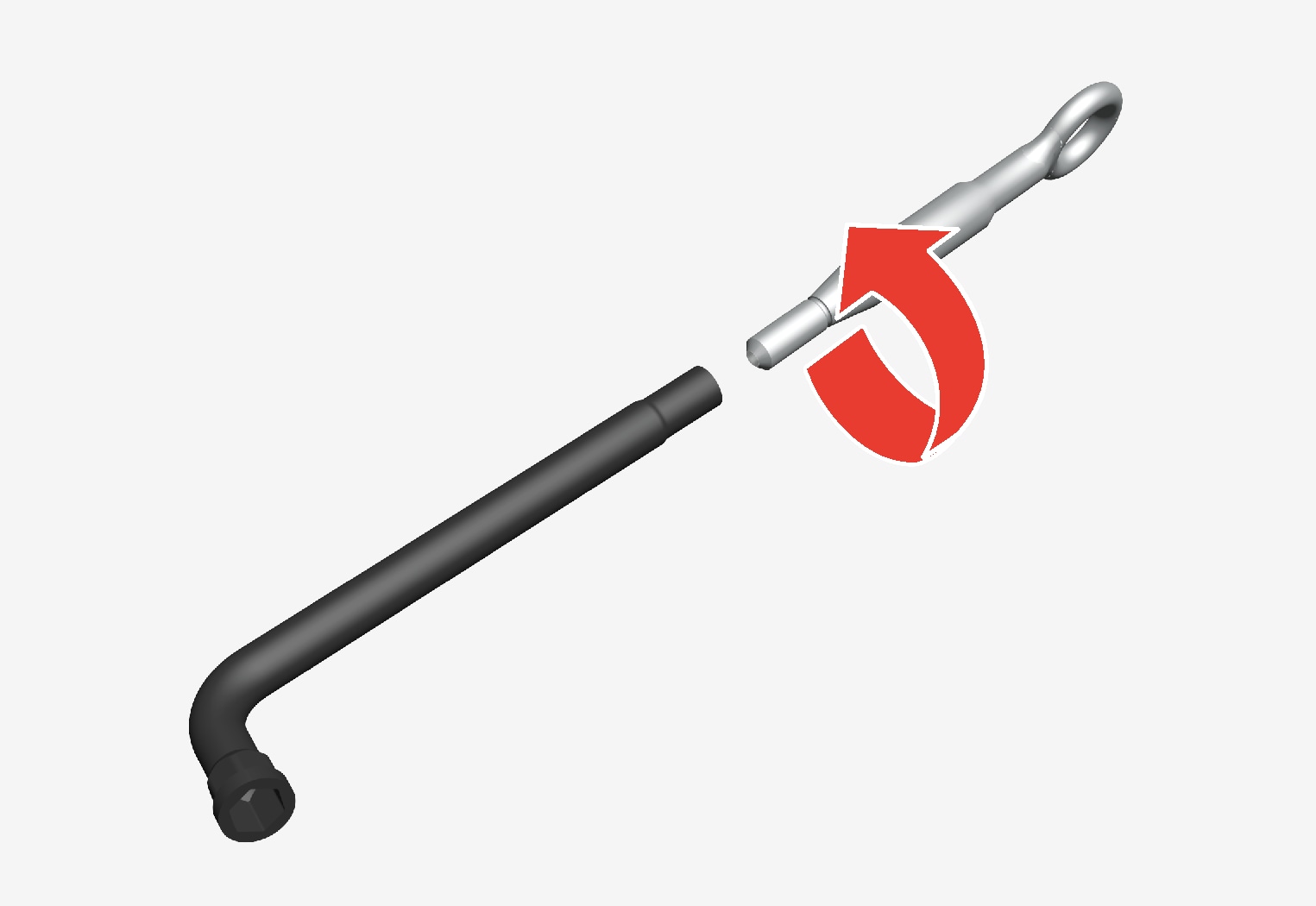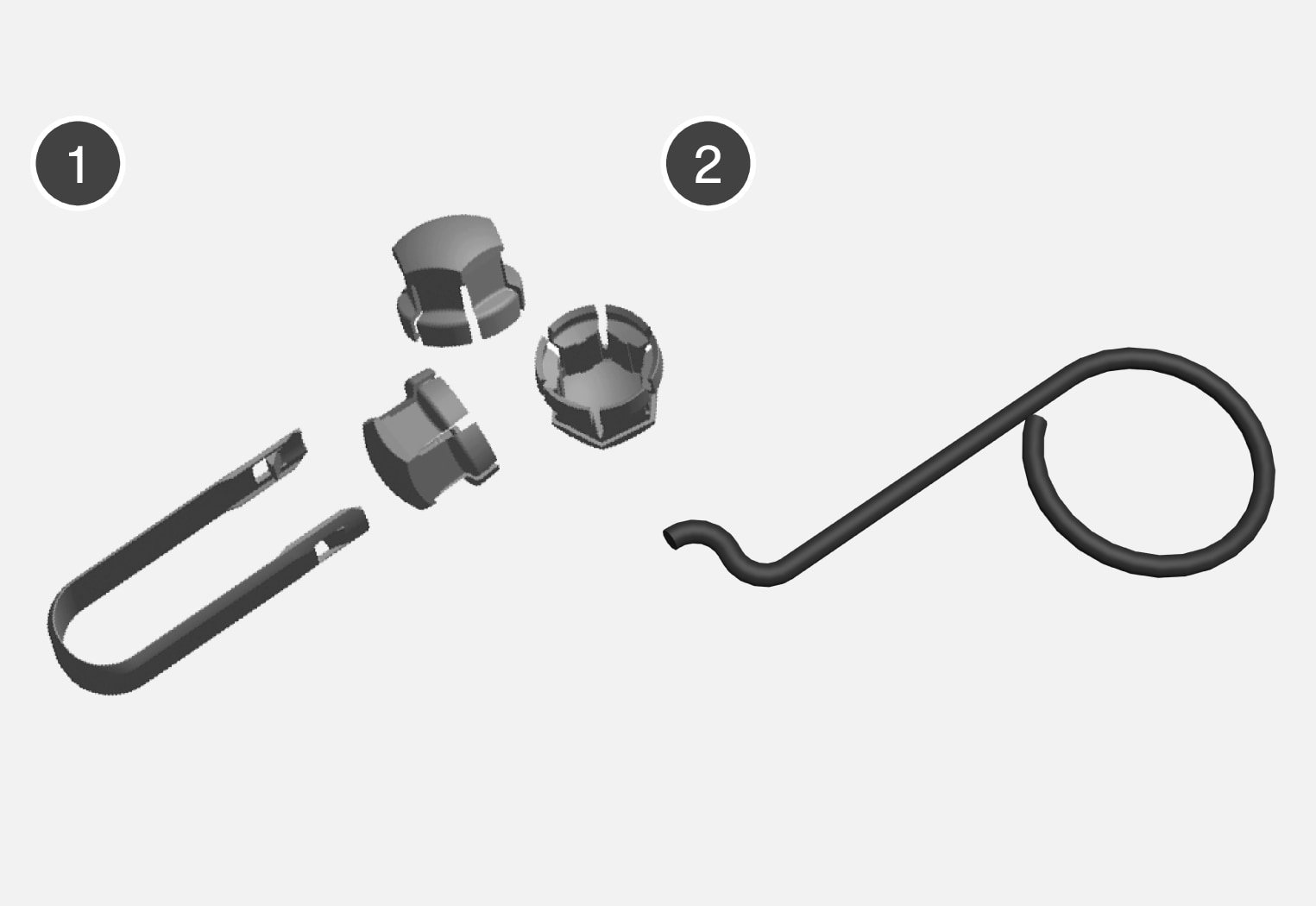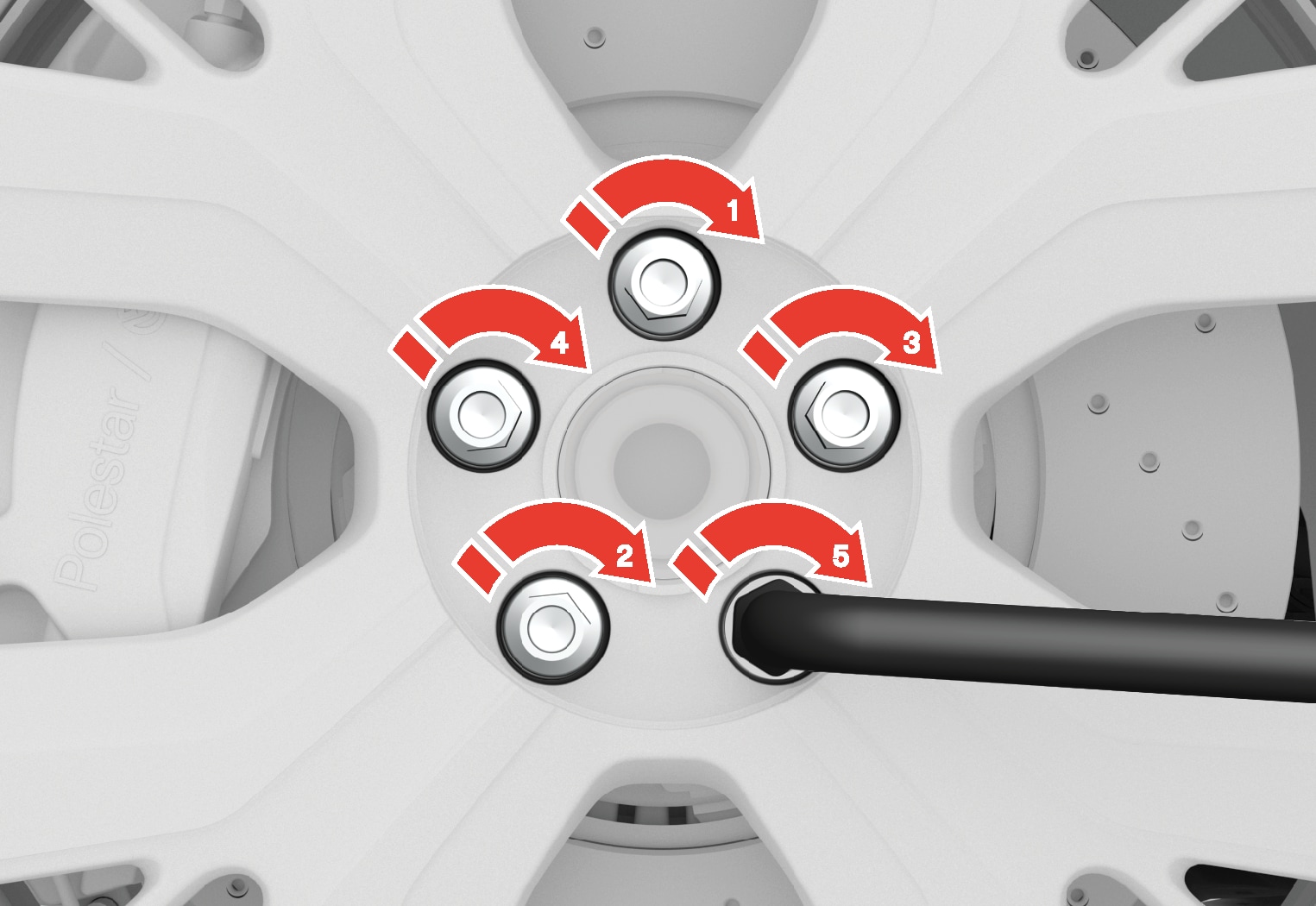Changing wheels
Wheel changes must always be carried out correctly. The following instructions show how to remove and mount a wheel and what is important to keep in mind. Make sure that the tire dimension is approved for use on the vehicle.
Warning
- If a tire must be changed near passing traffic, make sure all passengers move to a safe location.
- Use a jack intended for the vehicle when changing a wheel. For any other job, use stands to support the vehicle.
- Never crawl under or allow any part of your body to be extended under a vehicle supported by a jack.
- Never let anyone remain in the vehicle when it is raised on a jack.
Important
- Use a jack designed for the vehicle. If your vehicle is provided with a jack, or you have purchased one as a spare part, this jack is intended to be used only in temporary situations for short periods of time, such as when changing wheels in the event of a flat tire. If the vehicle needs to be lifted more frequently or for a prolonged period, using a garage jack or hoist is recommended. Always follow this device's instructions for use.
- When the jack is not being used, it should be stowed in the foam block in the frunk. The jack needs to be cranked into the correct position in order to fit.
Removing a wheel
Read through the instructions below before you begin. Before raising the vehicle using a jack or lift, take out all the tools you will need. Use a tool designed for your vehicle model.
Turn on the vehicle's hazard warning flashers if a wheel change must be performed in an area with traffic.
Make sure that the parking brake is activated.
Place chocks in front of and behind the wheels that are still on the ground. For example, use heavy wooden blocks or large stones.
Using the lug wrench, screw the towing eye into place as far as possible. The towing eye must be screwed in to its fully tightened position.

Depending on rim equipment:

 Tool for removing the plastic covers from the wheel bolts.
Tool for removing the plastic covers from the wheel bolts. Tools for removing the center wheel bolt cover. Put the tool into the hole in the middle of the wheel bolt cover and pull to remove the cover.
Tools for removing the center wheel bolt cover. Put the tool into the hole in the middle of the wheel bolt cover and pull to remove the cover.
With the vehicle still on the ground, use the lug wrench/towing eye to loosen the wheel bolts ½-1 turn by pressing downward (counterclockwise).
Follow these instructions for safe lifting of the vehicle using a jack.
Raise the vehicle until the wheel to be changed can move freely. Unscrew the wheel bolts and lift off the wheel.
Mounting wheels
The vehicle must be raised high enough so that the wheel you are removing can turn freely.
Clean the contact surfaces between the wheel and the wheel hub.
Lift the wheel into place. Tighten the wheel bolts securely.
Do not grease the wheel bolt threads.
Lower the vehicle so that the wheel cannot rotate.
Tighten the wheel bolts in a crisscross pattern (as shown in illustration). It is important that the wheel bolts are securely tightened. Tighten to 140 Nm (103 ft. lbs.). Use a torque wrench to check torque.

Depending on tire equipment:
- Replace the wheel bolt cover over the wheel bolts by aligning it with the guide marks and then pressing it into place.
- Press the plastic covers over the wheel bolts.
Check the tire inflation pressure and store the new inflation pressure in the tire pressure monitoring system*.
Warning
The wheel bolts may need to be tightened again several days after a wheel change. Temperature fluctuations and vibrations can cause them to loosen slightly.
Note
- After inflating a tire, always replace the valve cap to help prevent valve damage caused by gravel, dirt, etc.
- Only use plastic valve caps or original Polestar valve caps.





